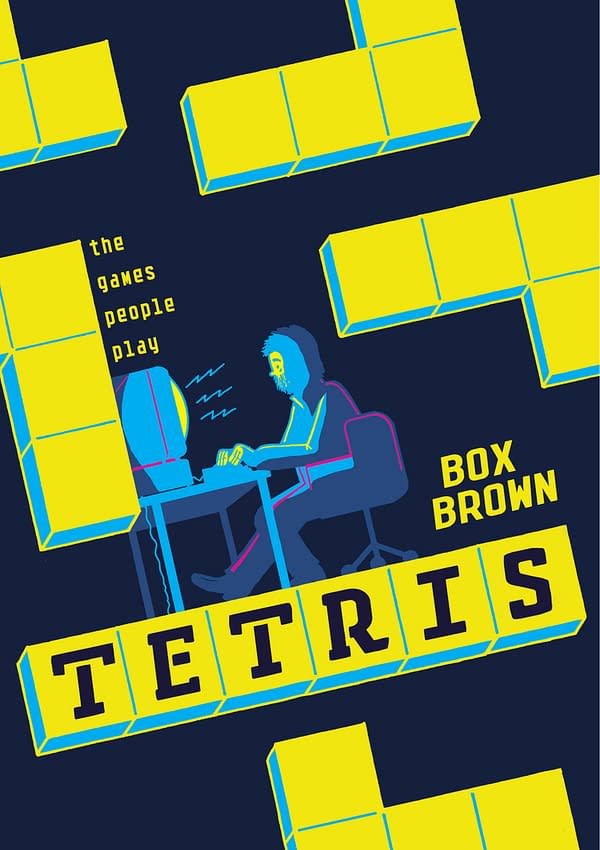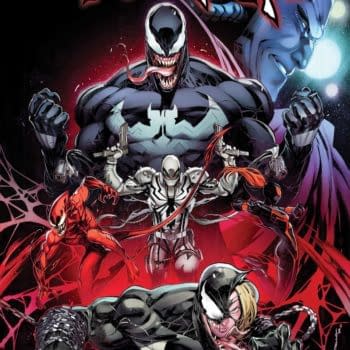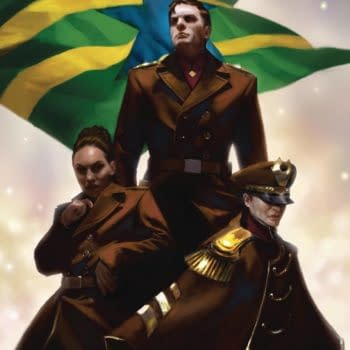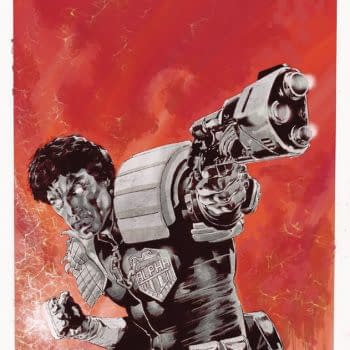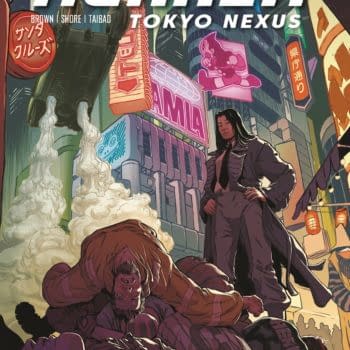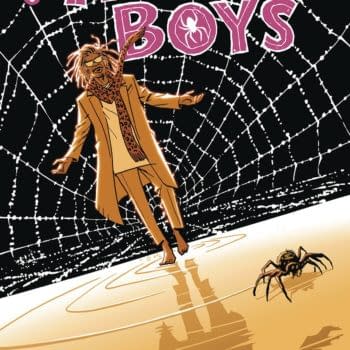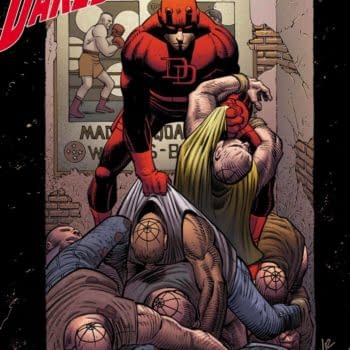Posted in: Comics | Tagged: Comics, entertainment
Box Brown Slots Everything Into Place – Talking Tetris
Tetris is a simple game with a complex story. The game was created by Alexey Pajitnov, a Soviet computer programmer who adapted a childhood puzzle game into one of the best-selling video games of all time, if not the most addictive. In Tetris: The Games People Play from First Second, Box Brown chronicles the game's origins, its introduction to the Western world at the tail end of the Cold War, and the three-way legal battle that climaxed in Moscow. Along with way, the author of the acclaimed Andre the Giant chronicles the history of games on society, as well as that of Nintendo, which would include Tetris with the original Game Boy. At New York Comic Con, Brown headlined a panel along with Dan Ackerman, who wrote his own book about the game, The Tetris Effect: The Game That Hypnotized the World (published by PublicAffairs).
Brown talked about his book and other projects with Bleeding Cool. Eventually, I hit the First Second booth on Friday, because that's when I thought the interview had been scheduled. Turns out it was for Saturday at the same time, which didn't interfere with any of my appointments, but it kept me from personal time on the floor. I sat down with him . . . turns out "Box" isn't his real first name, and there was a slave by that name who mailed himself to the North to obtain freedom. I had also gotten into the frame of mind by downloading Tetris onto my iPad. I'm sure he's done the same to at least one device. The panel on Tetris was mostly him and Dan Ackerman reading from their respective books, both of which I had read.
Bleeding Cool: What drew you to Tetris as a subject?
Box Brown: I'm a big documentary film buff. I watch them when I draw. One day, I stumbled across this documentary that the BBC made on Tetris, and it's all about the business end of it. I always know when it's a subject that would be a good book if I can't stop talking about it to people. To me, there are so many facets to the story, the way that it takes place during the Cold War, and then right at the end when communism fell and when Russia was trying to get into the world of business. At the same time, I played Tetris so much when I was a kid, as much as anybody else, which is a lot. I played it regularly from ages 9-18. It has that addictive quality to it. If I begged my dad hard enough, he's play Mario Bros. with me. But [with] Tetris, he'd just play on his own. It was the first game that the adults in my house cared about, played with me and talked about it. It's really important in the history of gaming, but also it tells a lot about the U.S. at the time.
BC: How do you consider yourself as a Tetris player?
BB: I played as a teenager because I worked at this card store that my dad owned, and we had a Game Boy back there. It would get slow, and we would all play competitively. At that point, I was pretty good. I could get 200 lines pretty easily. I played a little bit here and there when I was making the book, but I'm not nearly as good as I was when I was a teenager. I practiced for a while. It's like riding a bike. You pick it up and you're like, "Oh, yeah. This is how you play."
BC: When did you find out that Dan Ackerman had written his own book on Tetris?
BB: I found out in August, right before his book came out. It was like when my Andre the Giant came out, another comic came out. It was an uncomfortable feeling. With the Tetris book, his version is not a comic. I wish I had it when I started the comic, [because there are] so many good stories in it. I really think they're good companion pieces for each other. I think we take different perspectives on Tetris. It was great that we got to do the panel together. Me and Dan could probably talk about Tetris for hours and hours.
BC: How did the book differ from Andre the Giant?
BB: One of the things that was new with this book was [that] usually my comics focus on one character and his pursuit. There is one main character [in Tetris], but it's really like an ensemble cast. That was challenging for me because I'm not used to all of that characterization. One of the things I did when I first started working on it was [that] I drew this big family tree with all the characters in the book, and how they are connected to each other. It was just for my reference, but in the book, every time a new character is introduced, we get a short description and profile of the character to help the reader keep things together, but also to help me keep all these characters in order.
I think with pro wrestling I think this way about comics, too. There's kind of like a stigma. You would be pressed to find if the average person believed that pro wrestling is art. You're kind of supposed to think that comics are low art. Same thing with video games. One of the things that I wanted to do with this book and Andre the Giant is to open people's eyes to the idea of video games as art. It was a big deal for me.
BC: How long did you work on Tetris?
BB: About a year and a half. You do the research while you're working, so you know that takes a few months. That takes about a year to draw the whole book, which I think is pretty fast.
BC: What sort of research did you do for the book?
BB: There's a lot of secondary sources about the history of Tetris and video games. I got to speak to a handful of people involved. Gillman Louie, who was involved in the negotiation process of Tetris, is friends with Alexey Pajitnov and Henk Rogers, who were the creator and the main businessman that helped bring it all together. That was really interesting, getting an inside look at the business from their perspective. I also spoke with a neurologist about what makes Tetris addicting, and how it affects the brain and why you can't put it down when you start playing it. There's so much written about Tetris. When you're doing the research, you're voraciously grabbing everything that you can and reading it.
BC: What has reaction to your book been so far?
BB: It's been good. It's surprisingly, really. I think people kind of think of Tetris as background noise, but it's really ubiquitous. The story is fascinating, and people are really enjoying it. I met a woman who's a professional Tetris player who was really excited by the book, and who is telling me how obsessed she is about Tetris.
BC: What would you want readers to get?
BB: One of the main themes about it is how capitalism affects a work of art. Once [my work] goes out of my hands and into the public's, they can redefine what they think it is, and they can interpret in all these different ways. That happens to every piece of art. [Tetris] is like an extreme example of what can happen to your artwork once it gets into the hands of business types.
BC: What other projects are you currently working on?
BB: I run my own publishing company called Retrofit Comics. We try to put out twelve comics a year and champion shorter works. The graphic novel [format] is really popular, but I feel that there's also merit to shorter stories. That's one of the things we're going to focus on. We have a new book coming out by Anya Davidson that will debut next month. Luke Howard put out a book called Our Mother, which is about his mother's mental illness. I'm real proud about that stuff.



